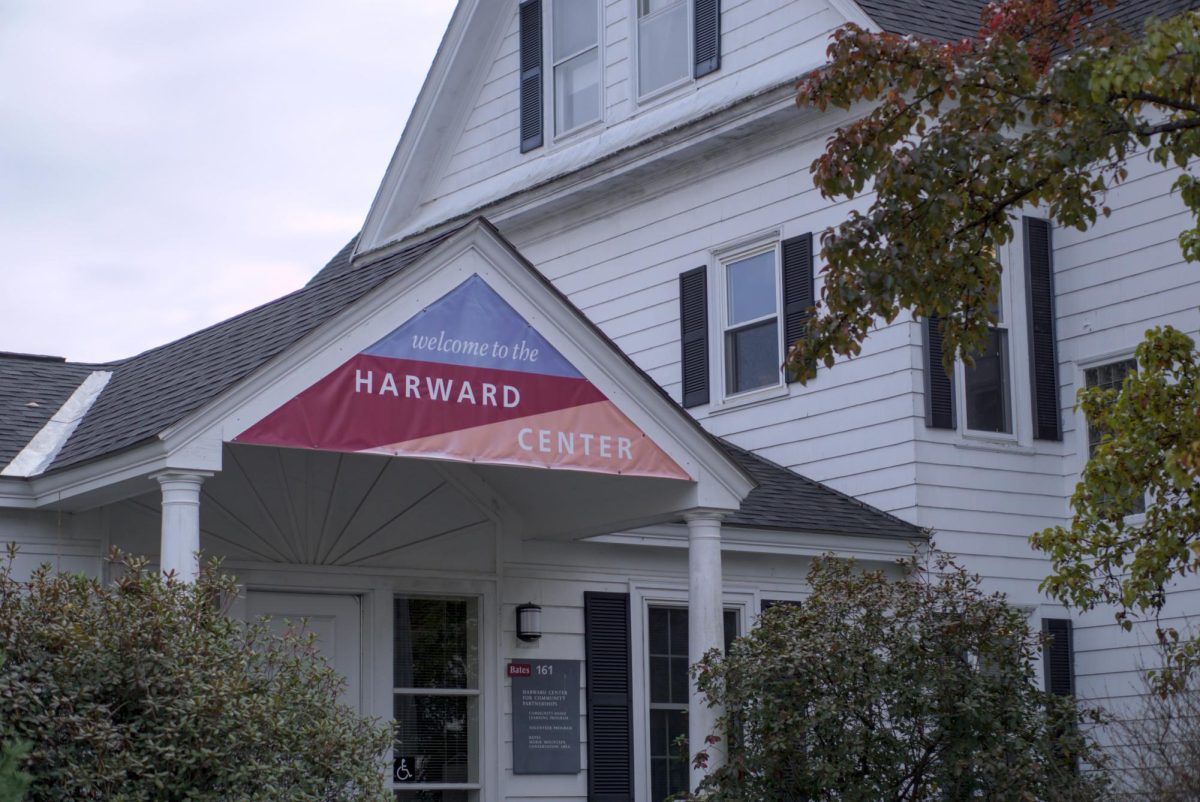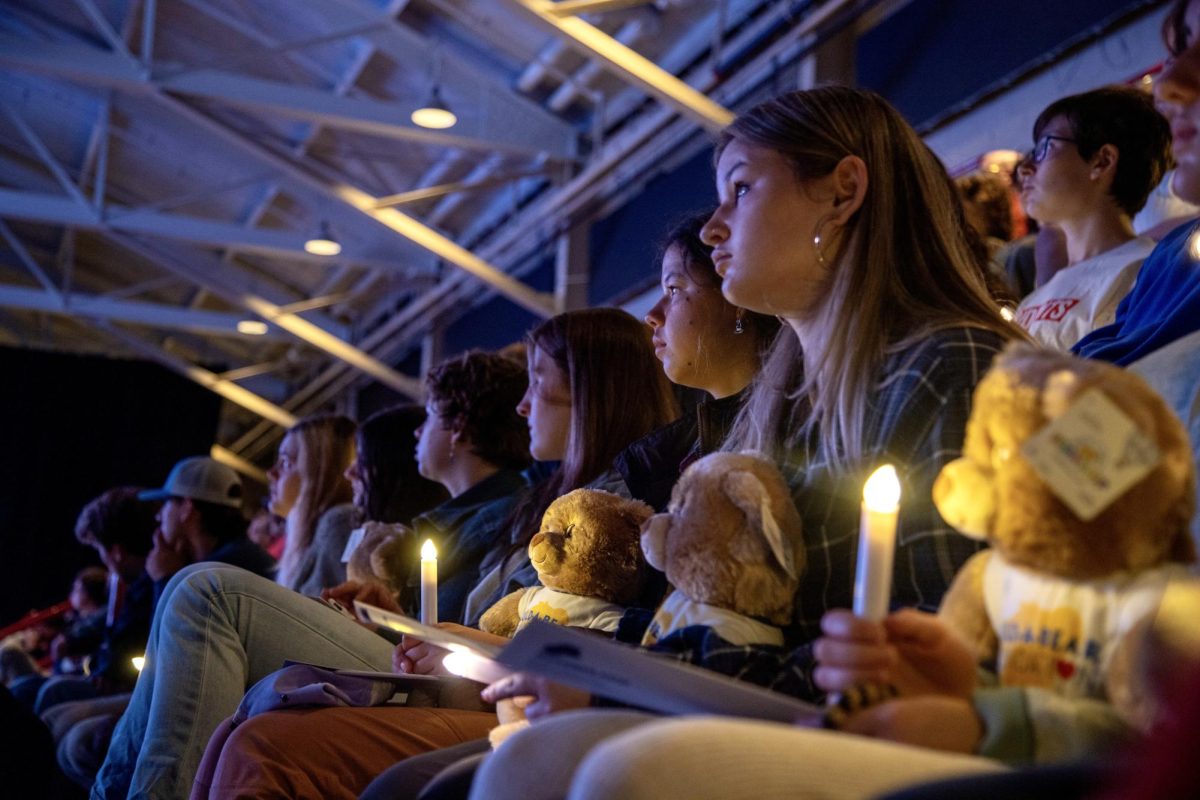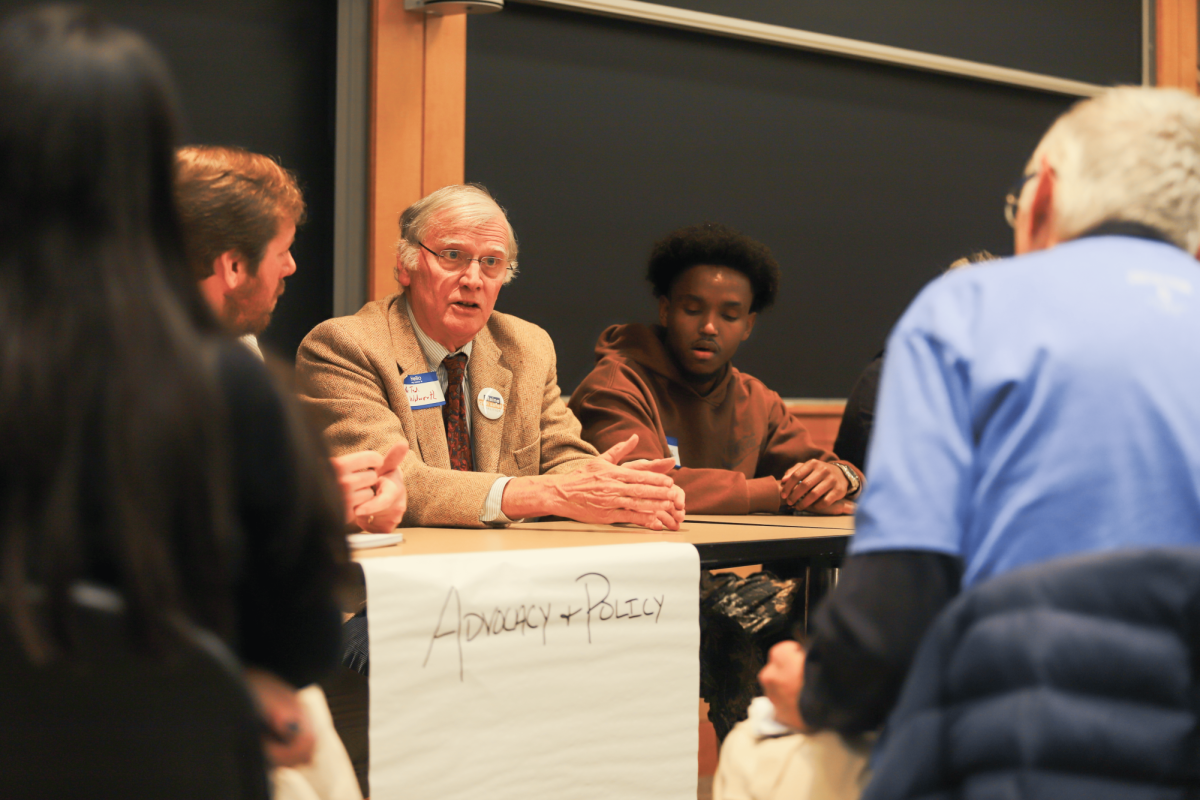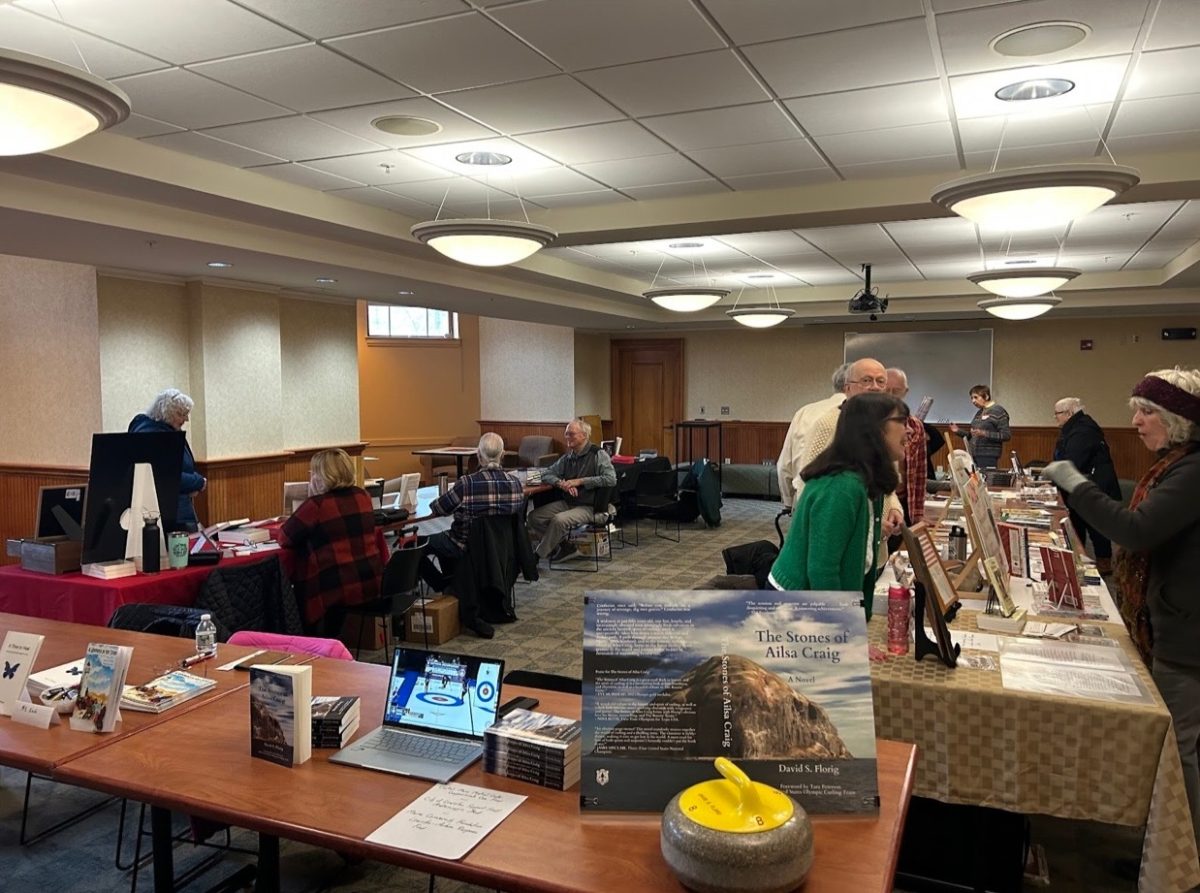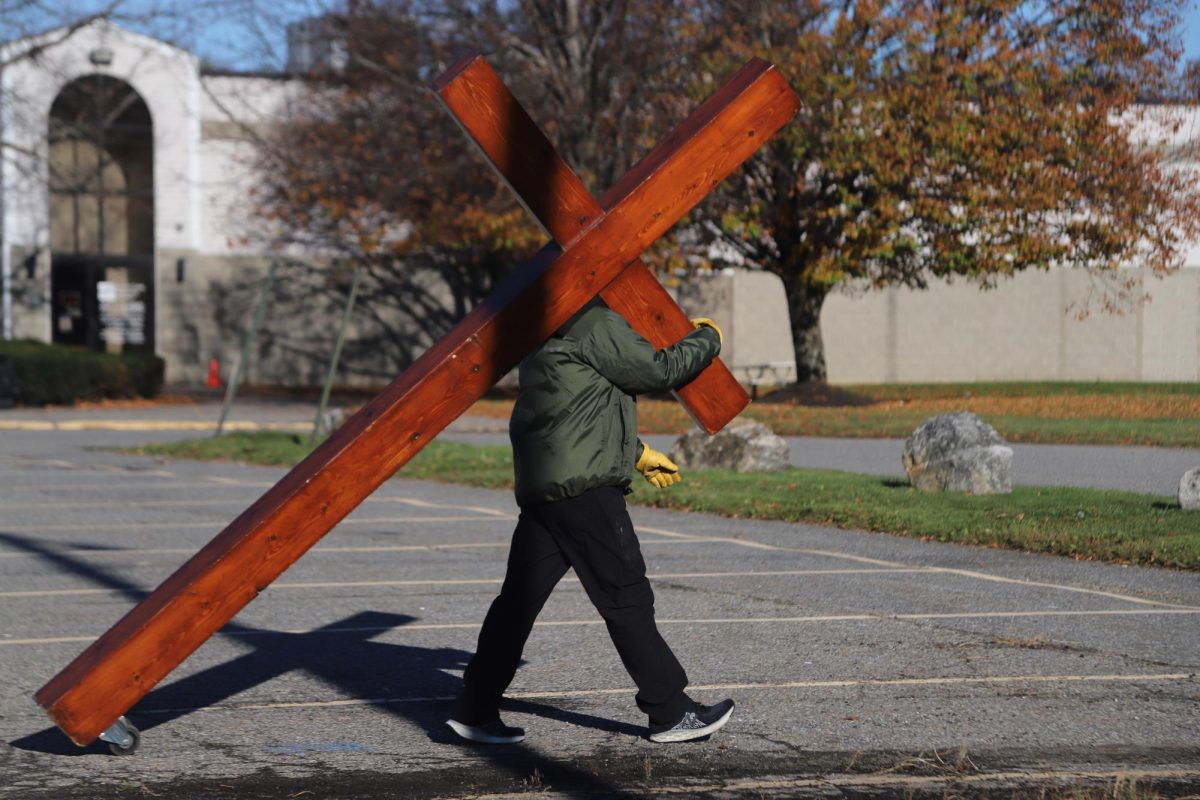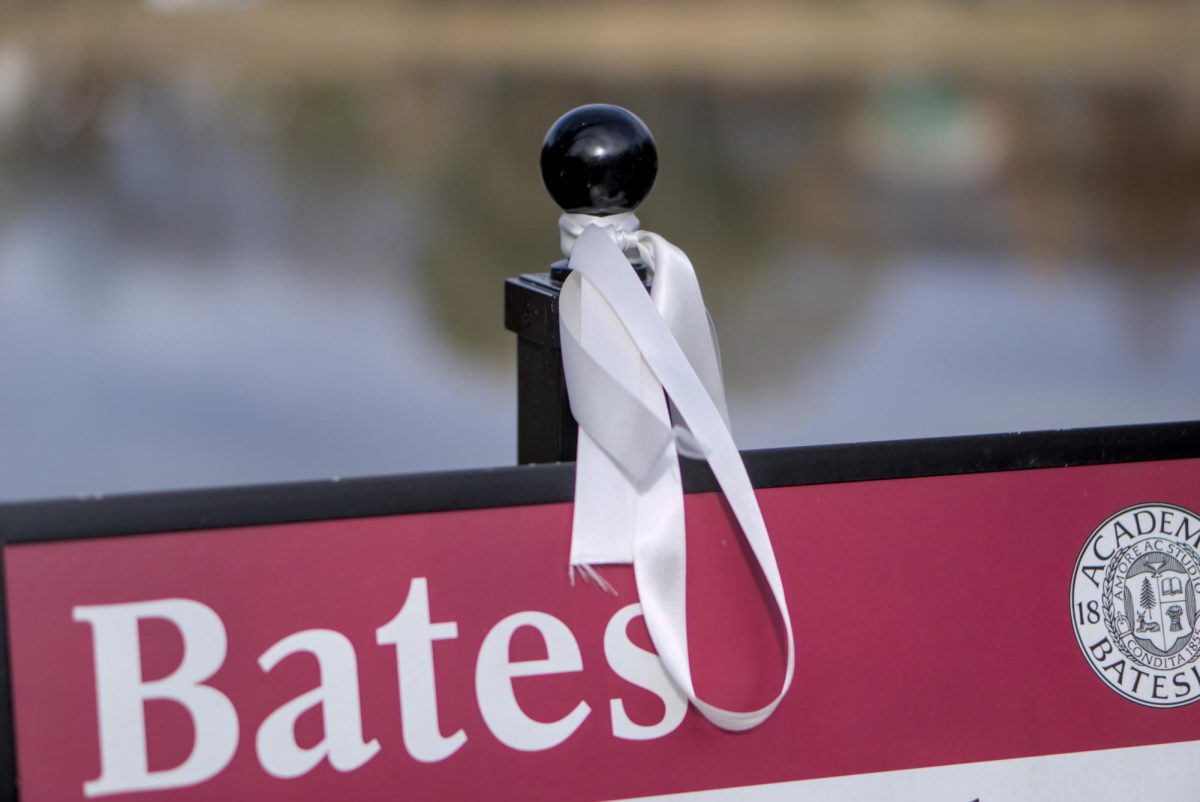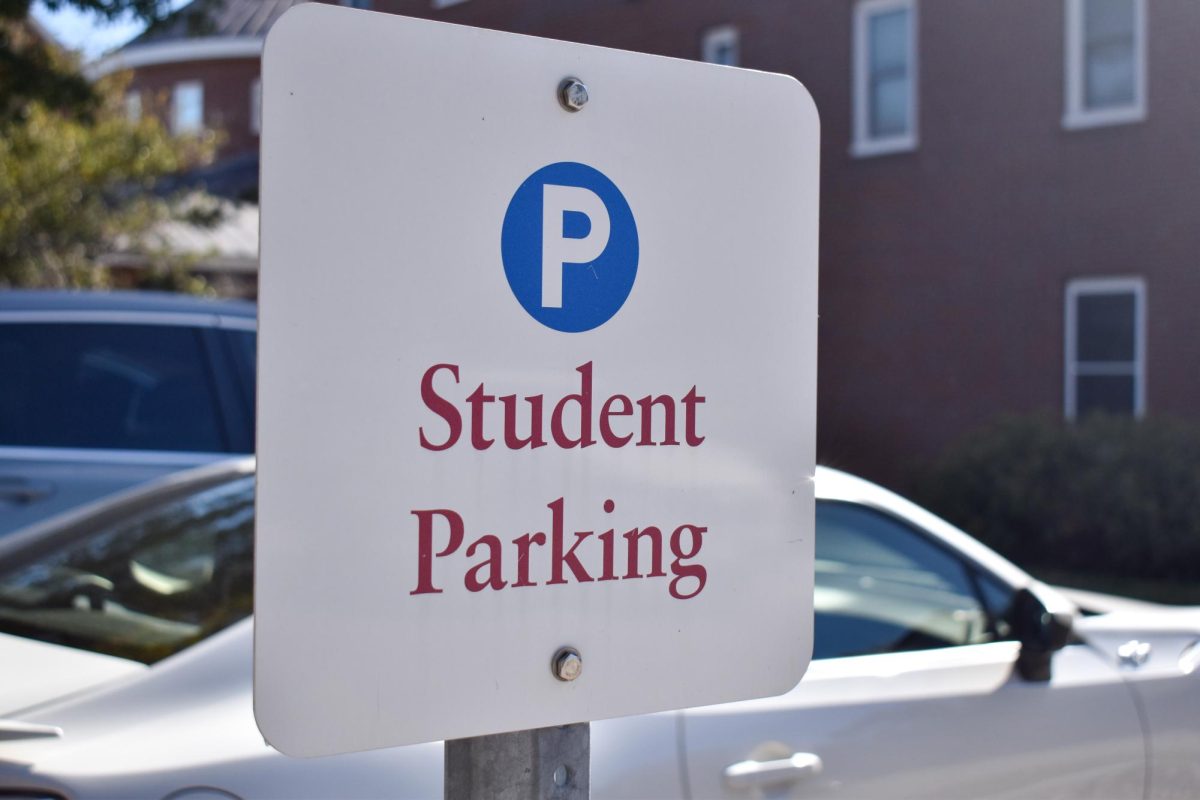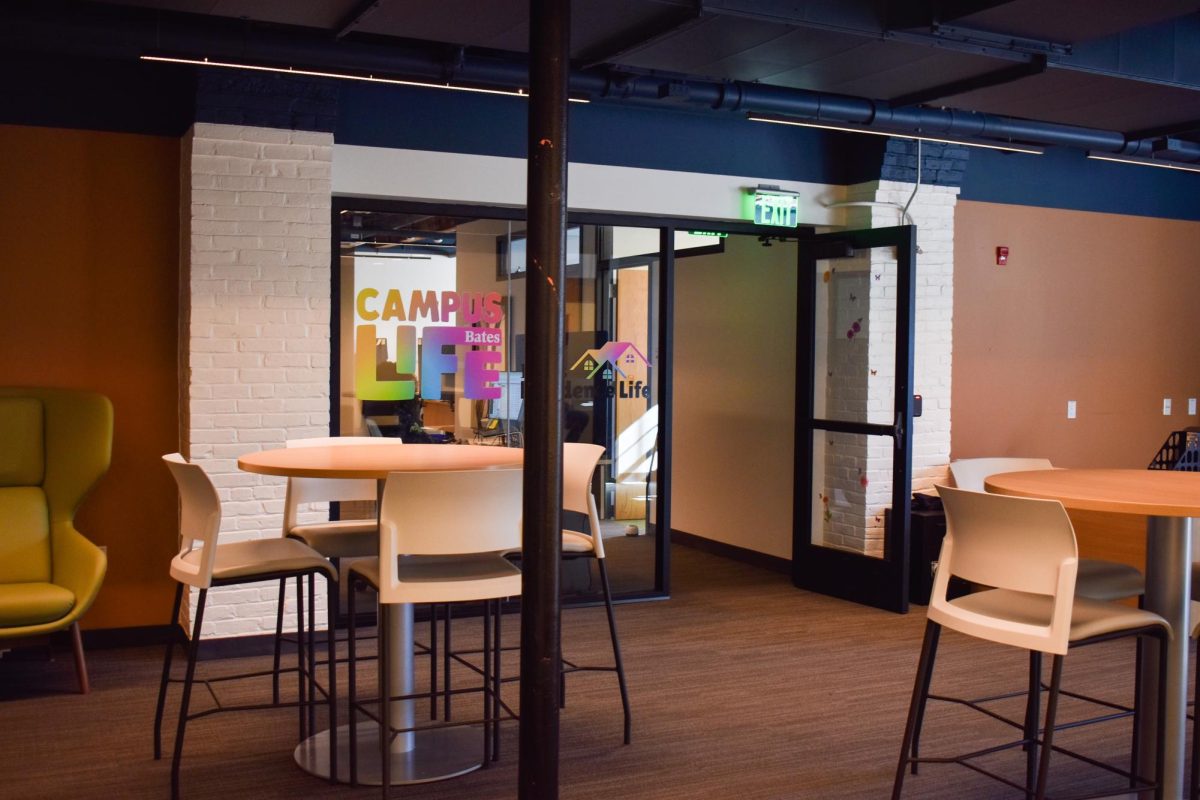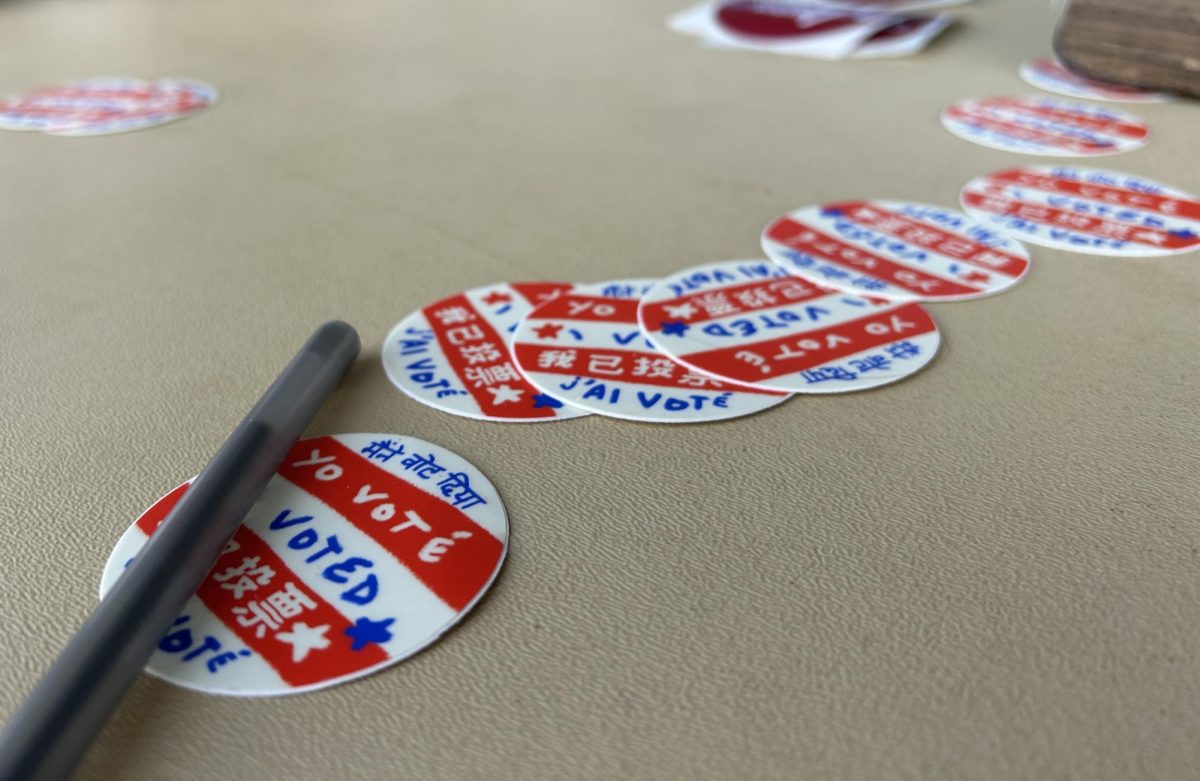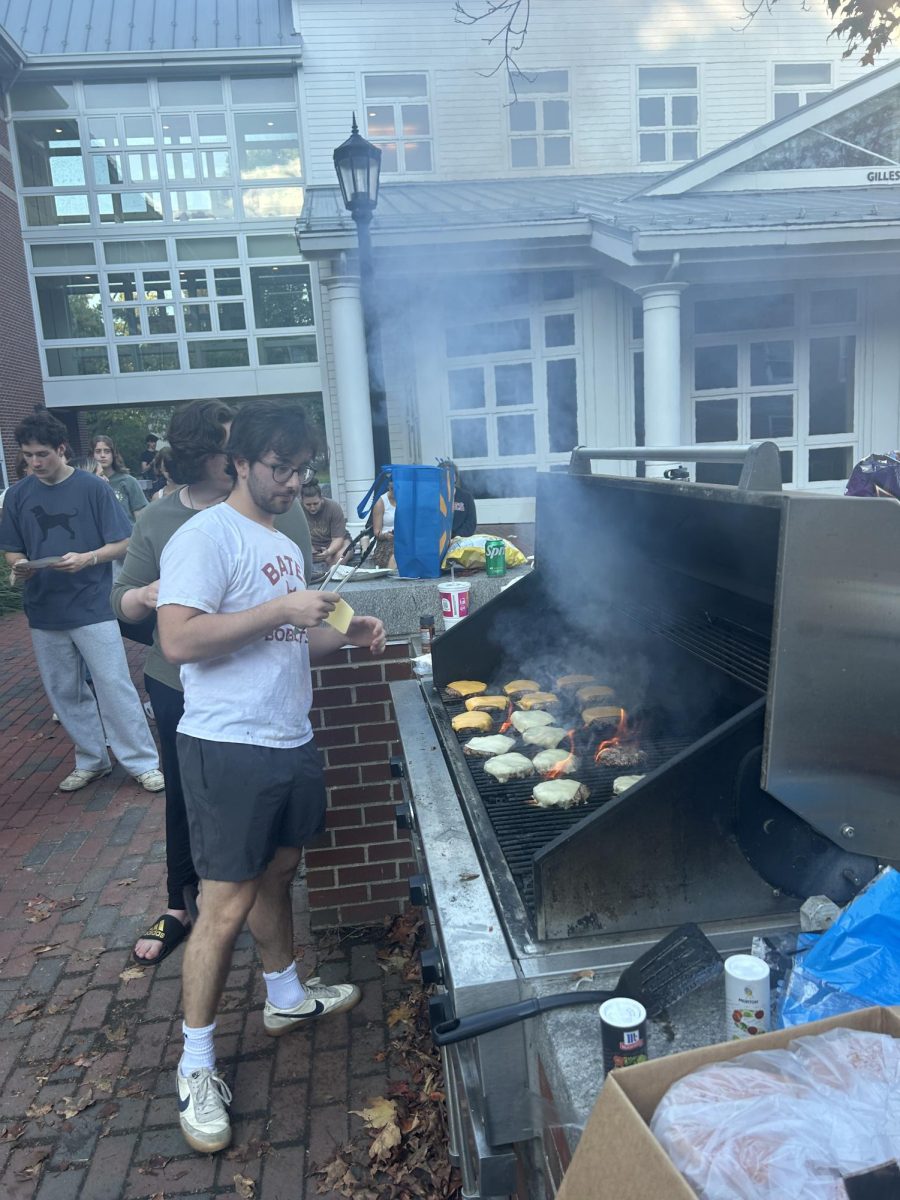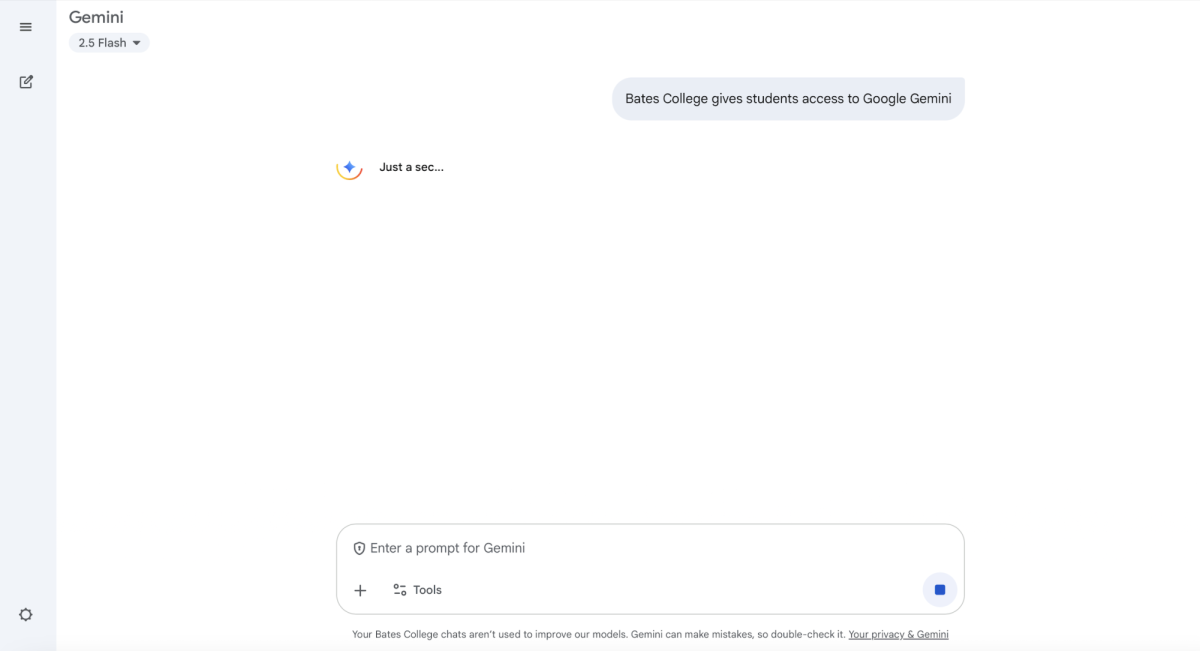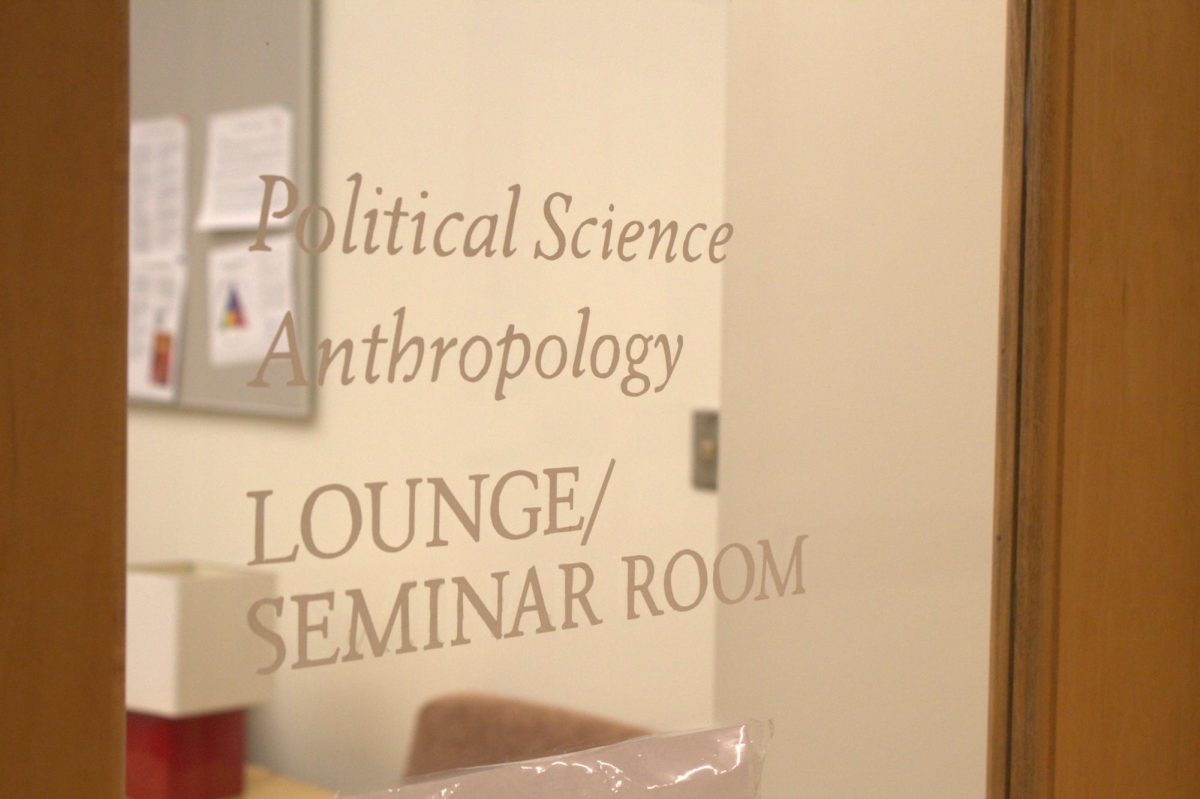In the wake of the Lewiston shooting on Wednesday, Oct. 25, Bates students are showing up for their community with renewed enthusiasm and ardor.
According to Darby Ray, Director of the Harward Center for Community Partnerships, there has been a surge of student participation in community engagement since the tragedy.
This community engagement has taken many forms, including volunteer opportunities created in direct response to the tragedy and ongoing service opportunities. Students participated in a gun control rally in Augusta, got involved in the election on Tuesday, Nov. 7, started drives for self-care items to healthcare workers at Central Maine Medical Center and organized an on-campus 5k to raise money for victims’ families.
Many students also worked with Tree Street Youth as part of Love Lewiston Day on Friday, Nov. 3. Following this day of service, students helped Lewiston neighbors unload furniture and unwanted items from their apartments in the Tree Streets neighborhood as part of a trash amnesty event during the weekend of Nov. 4 and 5.
Ray attributes this surge to the need for healing within the community. “I think we’ve seen a lot of students who seem to be responding to this shared tragedy — this collective trauma — by wanting to take action, and do concrete things, to participate in community, to be a part of this community and to contribute to the vibrancy and healing of this place,” Ray said.
She said that the shooting served as both a wake-up call and a perspective-altering moment for Bates students. “Sometimes we also get a little bit of a wake-up experience that says you could do more. And I feel like the shooting was a wake-up…I think it was the community recognizing [that Bates] was just as scared as the rest of us.” Ray added that the shooting “was just a time of maybe recognition, recognition that Bates really does care about this community, is part of this community, is fully engaged in this community.”
Bates student attendance at the community vigil on October 29 was also an important moment of community engagement for Bates students: at least 800 Bates students were present at the Basilica of Saints Peter and Paul.
In addition, “the campus-wide trick-or-treating event,” Ray said, “was probably the most dramatic example of how these students have come out in large numbers since the shooting to participate in the wider community.” She went on, “The response to that opportunity was enormous and immediate and kind of overwhelming.”
Regular volunteer commitments, like Playground Pals and Art Van, have also seen an increase in participation. Ray indicated that there has been an overall eagerness to get involved. “Everything we put out, students are just picking it up immediately.”
Community response to this outpouring of student support has been overwhelmingly positive. “We heard so many comments about how great it was to have Bates sort of front-and-center at the vigil through The Crosstones’ performance and also how amazing it was to see Bates step up and offer a safe trick-or-treating event for the community,” said Ray. She continued, “I think members of the off-campus community are always so excited to see Bates get mobilized in the community and showing up for community and following the lead of the community and responding to what they identify as the places where Bates students can be helpful.”
Though the October tragedy was a catalyst for this uptick in community engagement, Ray emphasized that this year has seen a general increase in student involvement. “Students seem to [have] come back to campus this year with a lot of energy for getting involved off campus.”
Ray credits the rise in off-campus student involvement to distance from COVID and the campus’s increasing return to normalcy. “I felt like this year [students] came back and were like: Okay, I know what Bates is, and now what is the wider community?” She adds that living in an increasingly polarized nation and world contributes to this desire to engage in community service.
“I think there’s a lot of appetite, maybe especially among young adults, to have experiences of coming together and working on shared projects of pursuing common goods…and getting involved off campus with the Lewiston community — Lewiston and Auburn — is a great way to experience that collective action and shared work,” Ray said.
Ray emphasized the Harward Center’s pride in its students, saying that “Bates students are big-hearted young people” and that “the kind of student who comes to Bates, or at least many of the students who come to Bates, are coming with those big hearts and those sort of hands and feet ready to get to work.”
Ray expressed her hope that this level of involvement continues and that she is excited for students to come back in January “refreshed and ready to dive in again.”
If students are interested in working with the Harward Center to get involved with community engagement opportunities, Ray urges students to use the center’s new platform, Community Pulse, to connect.


